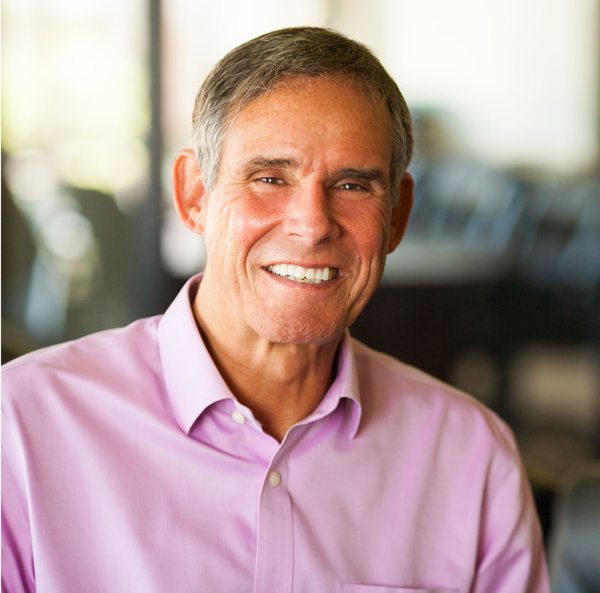Last month, President Trump signed an executive order making the development and regulation of artificial intelligence a federal priority. But one area where artificial intelligence is already taking hold is health care.
Doctors are already using A.I. to spot potentially lethal lesions on mammograms. Scientists are also developing A.I. systems that can diagnose common childhood conditions, predict whether a person will develop Alzheimer’s disease and monitor people with conditions like multiple sclerosis and Parkinson’s disease.

Dr. Eric TopolCreditSarah Topol Sacido
Dr. Eric Topol, a cardiologist and the founder and director of the Scripps Research Translational Institute, has long heralded this convergence of technology and medicine. Now, in a new book called “Deep Medicine: How Artificial Intelligence Can Make Healthcare Human Again,” Dr. Topol explores how A.I. is likely to transform almost everything that doctors do.
Dr. Topol believes that A.I. can do more than enhance diagnoses and treatments. It can also save doctors from doing tasks like taking notes and reading scans, allowing them to spend more time connecting with their patients. Recently, we caught up with Dr. Topol to discuss his thoughts on where A.I. has the most potential to improve health care, where it might stumble, and how it could protect doctors from things like burnout and depression. Here are edited excerpts from our interview.
Q. Can A.I. help to lower America’s soaring health care costs?
A. Yes. The No. 1 line item of health care cost in America is human resources, which has recently grown — as of December 2017 towering over retail — to be the leading job source for our economy. By augmenting human performance, A.I. has the potential to markedly improve productivity, efficiency, work flow, accuracy and speed, both for doctors and for patients. giving more charge and control to consumers through algorithmic support of their data.
Q. Can you talk about the area of medicine where A.I. shows the most promise?
A. There are a few key areas. One is machine pattern recognition to promote the rapid and accurate reading of medical scans, slides, skin lesions, the pickup of small polyps during colonoscopy, and much more. Another is keyboard liberation, or using natural language processing of speech to synthesize notes and eliminate the ultimate source of distraction and dislike in medical encounters. A.I. can also predict key outcomes for both patients and clinicians to promote prevention.
Q. Where is A.I. most likely to fail?
A. There’s no shortage of deep liabilities for A.I. in health care. The liabilities include breaches of privacy and security, hacking, the lack of explainability of most A.I. algorithms, the potential to worsen inequities, the embedded bias and ethical quandaries.
Q. In your book you talk a lot about the rapid growth of A.I. companies in the radiology space. Will A.I. make radiologists obsolete?
A. Absolutely not. I wrote about a new role for radiologists, whereby they come out of the basement and have direct interactions with patients. We can’t, and will never, rely on only algorithms for interpretation of life and death matters. That requires human expert contextualization, something machines can’t do.
Q. Can you share your thoughts on one or two of the most innovative or impressive A.I. companies you’ve come across?
A. I don’t think there’s a standout just yet. For start-ups, I admire the way AliveCor, with their Mayo Clinic collaboration, was able to develop deep learning algorithms to determine a person’s blood potassium levels via a smartwatch ECG signal. For tech titans, Google AI and its DeepMind division has done some impressive work that includes accurately triaging urgent eye conditions, predicting outcomes in the hospital setting, and an important prospective study of pathology slides in cancer.
Q. You’ve long been a big fan of personalized nutrition. Will we ever get to a point where A.I. can determine the best diet for every individual?
A. There are emerging data to support this possibility, such as avoiding glucose spikes after eating, which are highly individualized, much more common than anticipated, and related to the specific foods we take in and our gut microbiomes. It’s still early but definitely getting traction from ongoing work.
Q. In the future will A.I.-assisted robots replace surgeons?
A. No way. A.I. can help the precision of delicate microsurgery, as we have already seen with the retina. There will be better robots for surgery than we have now. But that won’t obviate the need for human surgeons. It will just augment their performance. Would you want your surgery to be done by a robot?
Q. Studies show that A.I. can detect depression by scanning a person’s Instagram photos. Could A.I. be a game changer for the mental health field?
A. Yes, but not via your Instagram posts! For the first time we’ve got real-time, objective metrics for state of mind and mood like tone of speech, breathing pattern, smartphone keystrokes and communication, and physical activity. And we’ve learned people would rather share their innermost secrets with an avatar compared with a human being. So, the landscape is ripe for A.I. to help alleviate the profound shortage of health professionals compared with the enormous burden of depression and other mental health conditions.
Q. What are you most excited about with A.I. in health care? Is there anything that worries you?
A. What I’m most excited about is using the future to bring back the past: To restore the care in health care. By giving both the gift of time to clinicians, who are at peak levels ever recorded for burnout and depression, and empowerment to patients, for those who want it, this will ultimately be possible. But it will require substantial activism of the medical community to stand up for patients and not allow the jump in productivity to further squeeze clinicians, upending the erosion of the doctor-patient relationship.

